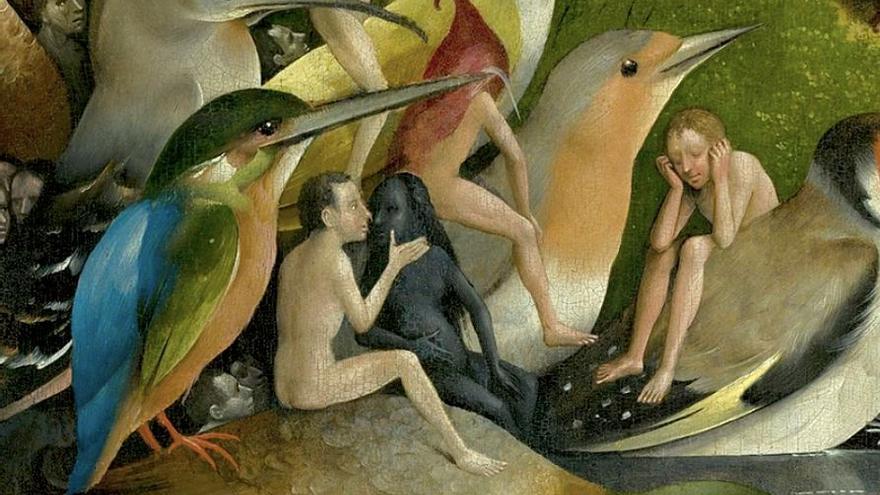
![]() 14ymedio, Xavier Carbonell, Salamanca, 27 August 2023 – It’s been a good year for Reinaldo Arenas. A few moths after re-publishing Antes que anochezca [Before Night Falls], Tusquets rescued El mundo alucinante [Hallucinations] and its to be hoped that more of his titles return to the bookshops during the celebrations for 80 years since his birth.
14ymedio, Xavier Carbonell, Salamanca, 27 August 2023 – It’s been a good year for Reinaldo Arenas. A few moths after re-publishing Antes que anochezca [Before Night Falls], Tusquets rescued El mundo alucinante [Hallucinations] and its to be hoped that more of his titles return to the bookshops during the celebrations for 80 years since his birth.
The indifference with which Cubans have come to the party says much about the country that we currently have. But nothing surprises. Arenas was published for the first and only time in Cuba in 1967. His books continue to enter the country secretively, and although false friends, resentful lovers and posthumous saviours continue to embalm him insolently, no censor is ready to give him absolution for the Tétrica Mofeta [When Skunk in a Funk].
He doesn’t need it, of course. Arenas is a religion unto himself, with cosmogony, martyrs and apocalypse. There isn’t anyone authorised to give him peace except himself or his doubles — Reinaldo, Gabriel and the skunk: three distinct mad beings but with one single essence. The workings of his world, as mystical as they are carnal, as private as they are rich in rumour, hitch themselves to two books which give the impression, only too accurate, of having been written by a dead man.
His ferocious autobiography and last novel, El color del verano The Colour of Summer], execute such a meticulous bombardment of Cuba and its foreign province of Miami, that the more than 300 people mentioned in it — being given the courtesy of their names ’deranged’, and at times not even that — must have cut his books into pieces on at least one occasion. Although his memories end up being deformed as fiction, in The Colour of Summer – subtitled New Garden of Delights, like the painting, The Woods – the language is as loose as the very devil’s.
In the final and most ardent sewer, we have the dictator Fifo, Raúl and his pets – including the Bloody Shark; in heaven, although exposed to shrapnel, there are Lezama, Casal, la Avellaneda, Heredia and Martí. In the queue for the guillotine and with names changed, are: Miguel Barniz, Tomasito la Goyesca, H. Puntilla, Karilda Olivar Lúbrico, Alejo Sholehov, Delfín Proust or the Queen of the Spiders, and – fanning himself there in Paris – Zebro Sardoya. Running around, wandering the streets hunting for recruits or hiding himself down in the drains, are the raving lunatics – although at any point remote, or on the edge: we are all crazy according to Arenas – the Duchess, the Super-satanic, the Queen, the clandestine Fortune teller, the Triple-ugly, Tedevoro, and finally the Funky Skunk.
The story – which begins with the escape of Avellaneda to Miami and ends when the Cubans, as a result of wearing away the island’s platform, remove it and sink into the sea – contains the most bitter declaration that any writer has ever made about his own country: “This is the story of an island where only the most servile and mediocre people have triumphed. An island subjected to an infinite summer, an infinite tyranny and the unanimous exit stampede of its inhabitants, who, whilst praising the island’s marvels, think only of how to escape from it. This is the story of an island that, whilst apparently covering itself in the glitter of official rhetoric, inside it is ripped apart and hopes only for the final explosion”.
The book would be perfect if Cabrera Infante didn’t exist. For the superstitious reader, The Colour of Summer has too many irritating similarities to Cabrera Infante’s Three Sad Tigers. Both are fragmented, godless, both replace and disrupt men, both are keen on lists and tongue twisters, both rewrite history and are obsessed with sex and with humour as a last refuge. Also, like all Cuban novels – from José Martí’s diary, to Paradiso [Paradise, by José Lezama Lima] and Los pasos perdidos [The Lost Steps, by Alejo Carpentier] – it aspires to serve as a general interpretation of the world. And of the Island.
Nevertheless, I read The Colour of Summer in one sitting – in Spain, in August, arid without let up – without allowing myself to be tormented by paranoia. In any case, if Arenas and Cabrera Infante achieved anything it was to give to certain moments in Cuban history a density resulting in something very vivid and traumatic. And – what is even more disconcerting, knowing both writers – neither of them takes a swipe at the other. In fact, Cabrera Infante wrote a moving obituary of Arenas, about “his life as a persecuted, beaten and caged dog, obliged once again to live forever as a fugitive”. I prefer to read his novels as reincarnations of the same mocking spirit that is only possible in that country. Short-sighted tiger or vengeful slut, Cain or Celestino, the summer or hell. Who knows whether in the end they aren’t the same thing.
Translated by Ricardo Recluso
____________
COLLABORATE WITH OUR WORK: The 14ymedio team is committed to practicing serious journalism that reflects Cuba’s reality in all its depth. Thank you for joining us on this long journey. We invite you to continue supporting us by becoming a member of 14ymedio now. Together we can continue transforming journalism in Cuba.
